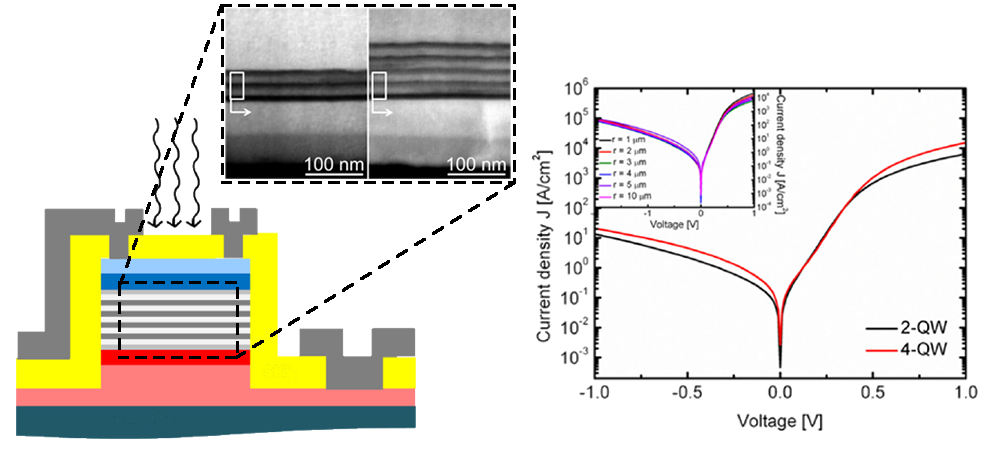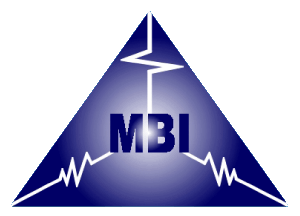Group IV Photonics
Given that todays micro- and nano-electronic circuits are largely based on very mature silicon CMOS technology, it is natural to aim at extending this technology to totally monolithic optoelectronic integrated circuits that seamlessly combine photonics and electronics (and potentially even plasmonics). As silicon is a notoriously bad light emitter, this requires to expand traditional silicon photonics to include active devices based on binary and ternary alloys of group IV elements. The substantial group of elemental, binary and ternary materials that fall into the category of group IV photonics such as Si, Ge, Diamond, SiC, GeSn, SiSn, SiGeSn, and Graphene allow for novel electronic components.
 Architecture and performance of a SiGeSn-based multiple-quantum-well photodiode (adapted from Optics Express 23, 25048 (2015)).
Architecture and performance of a SiGeSn-based multiple-quantum-well photodiode (adapted from Optics Express 23, 25048 (2015)).
Specifically, we are concerned with modeling the physical properties of the alloys of Si, Ge, and Sn. Notably, the ternary alloys Si1-x-yGexSny were found to be direct semiconductors for certain compositional ranges. In addition, we work on the the characterization and design of group IV optoelectronic devices based on those alloys.
In this quest, we utilize the following methods:
- k.p-Theory
- Empirical Pseudo-Potential Band Structure Computations
- Density Functional Theory
- Strain Computations



